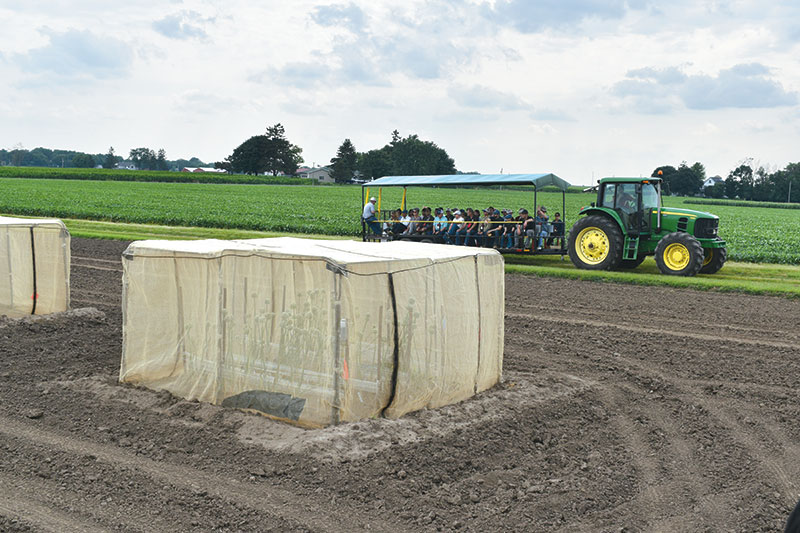Story and photos by Dave Alexander, Publisher
National Onion Association (NOA) meetings are always an international affair, drawing people from around the globe. But this July in Madison, Wisconsin, the National Allium Research Conference (NARC) and International Allium Research Symposium (IARS) joined forces and combined their meetings with the NOA, making a three-way conference packed with diversity, research, ideas and an enhanced international feel. If a grower had a problem, there were endless experts to consult.
NARC meets every two years and has combined its conference with NOA before. The IARS, however, meets only every four years in different countries. The IARS addition to NOA is what upped the international spice.
Mike Havey with the University of Wisconsin and USDA-ARS coordinated the NARC and IARS arms of the convention. At the conference banquet, Havey was honored for his career achievements and contributions to the allium industry, including breeding, genetics and mentoring.
“This is the first time that the NOA, NARC and IARS have ever been together,” Havey said. “The close interaction between the grower and the research community makes our total community and our commodity stronger, so we really worked hard to bring the groups together.”
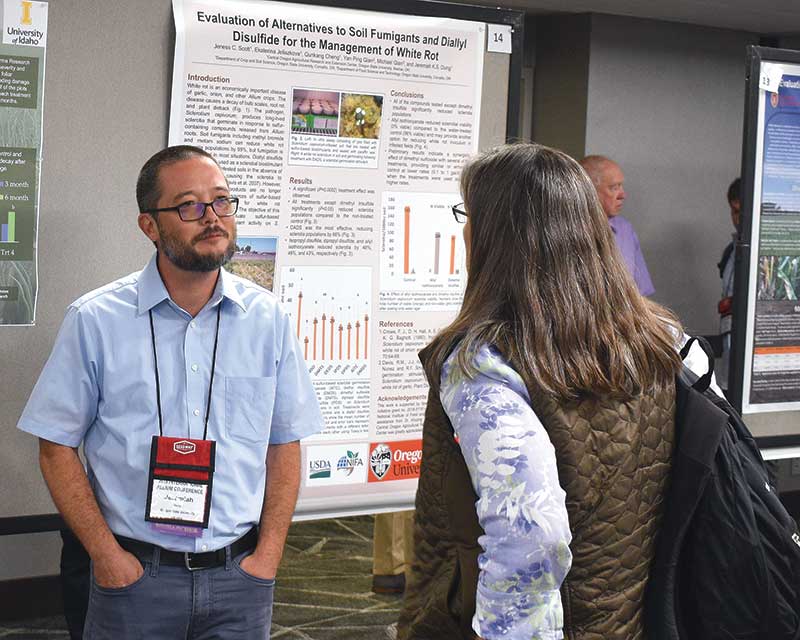
International Appeal
Subas Malla with Texas A&M AgriLife Research was one of several individuals attending their first NOA conference.
“I came to interact with other researchers and for the W-3008,” Malla said.
The Multistate Research Project W-3008 meeting was held the day before the conference began, so in reality,
four groups were in Madison, but many W-3008 folks are members of one or more
of the other groups, as well.
Although
Ludmilla Khrustaleva attends
every IARS meeting, she was a first-timer to NOA. Khrustaleva
traveled from Moscow, Russia, to the convention because she
was invited as one of the featured international speakers.
“It was not easy to come because I needed a visa,” she said, adding that she was glad she made the effort and enjoyed the conference and catching up with old colleagues and collaborators, including Havey.
Kota Tsutsui with Shippo Seed Company in Japan has been to the NOA meetings before and always attends IARS. He came to the U.S. this time primarily looking for new research, but this trip was a natural because his colleague and travel mate, company director Kazumitsu Tsutsui graduated from the University of Wisconsin in Madison.
Since Hazera co-workers Charlene Deciou and Stephan Schroder are both new to the industry, they came to their first NOA conference from the Netherlands to network and to learn. They said they enjoyed listening to the research presentations, finding out about new diseases and learning about alliums in general.
New Zealand onion grower Eamon Balle with Balle Brothers Group flew to Wisconsin to gain information and knowledge, primarily about diseases and pests. Balle said New Zealand growers face many of the same challenges as their U.S. counterparts, including thrips, white rot, downy mildew and stemphylium.
Hanging out with Balle was fellow Kiwi Shane Smith with Inta-Ag Ltd. He came to the conference this year specifically because the three groups combined their conferences. He expected more agronomists and growers to talk to, and he was not disappointed. He said his trip was very worthwhile and beneficial and it “was very helpful interacting with some of the scientists of the universities and picking their brains and getting extra information.”
The three groups (four, counting W-3008) represented 17 countries. Attendees included 229 registered growers, researchers, sponsors, associated industry and family members. This count more than doubled last year’s summer registrations, attesting to the power of joining forces.
NOA Field Day
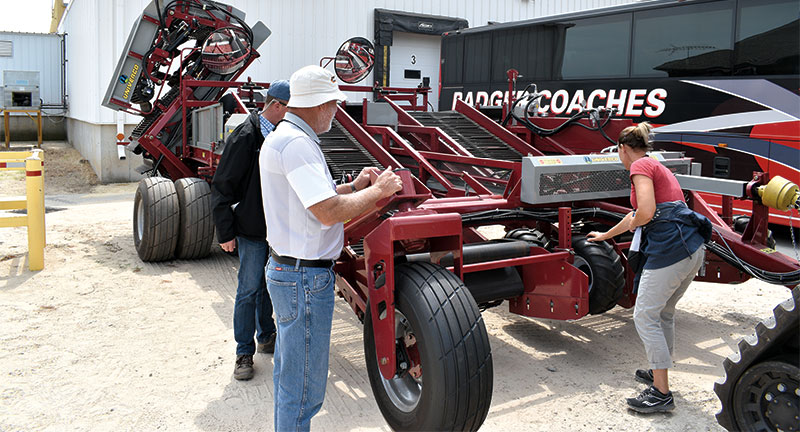
The field day featured two stops: the Gumz Farms packing shed in Endeavor, Wisconsin, and Seminis Vegetable Seeds in DeForest, Wisconsin.
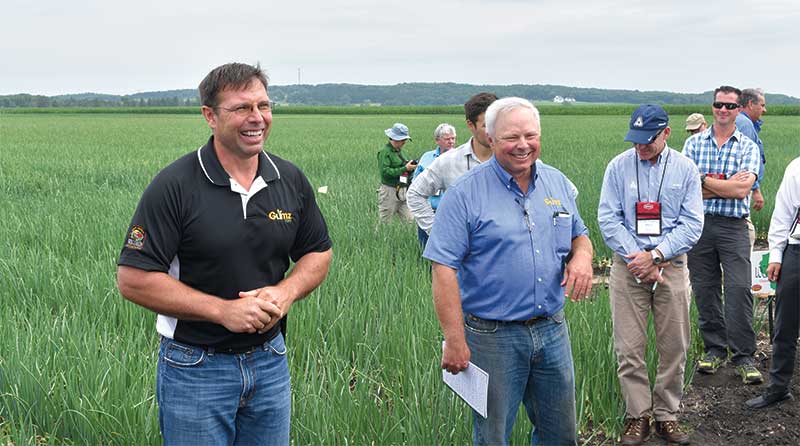
Gumz grows 40 percent of Wisconsin’s onions in addition to potatoes, carrots and mint. The farm and packing shed are impressive – modern, clean and professional. Attendees toured the farm and enjoyed a Wisconsin-themed lunch including brats, cheese curds, frozen custard and even onion brownies.
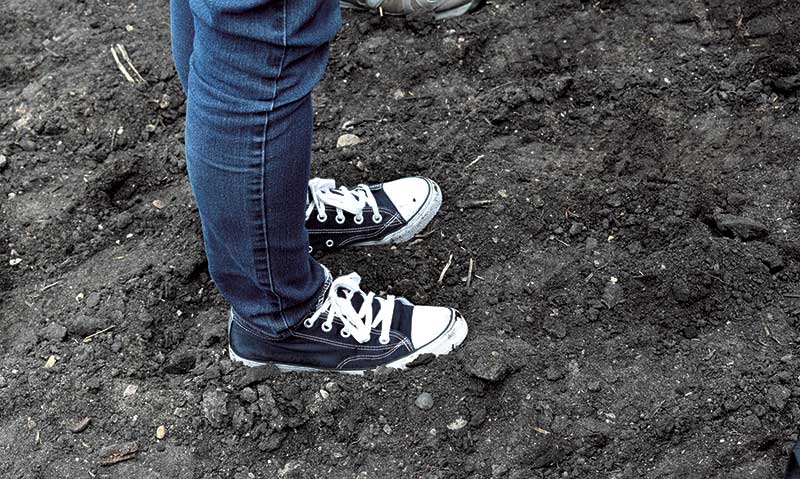
Tours were also offered at the Seminis onion breeding facility. Attendees got to see onion cages and isolation pillow tubes in the field. Each wagon full of visitors had its own tour guide.
